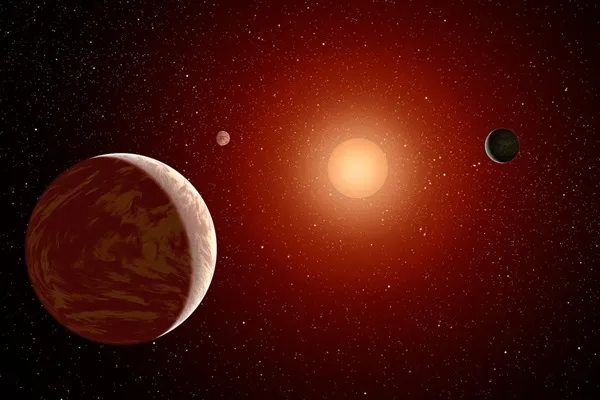New research analyzing meteorite data indicates that the instability of the solar system’s giant planets took place between 60 million and 100 million years after the system’s formation. Remarkably, this timing aligns with the period when Earth’s moon was formed, shedding light on an important milestone in the history of our solar system.
Planetary scientist Alessandro Morbidelli from the Observatoire de la Côte d’Azur in Nice, France, highlights the significance of this giant planet instability, stating, “It is related to a complete reshaping of the solar system, the formation of the cometary reservoirs, the sculpting of the asteroid belt.” Understanding the precise timing of this event provides a crucial reference point in the solar system’s evolution.
The theory of giant planet migration, which explains many aspects of the solar system’s structure and dynamics, was initially proposed by Morbidelli and colleagues in 2005. While it was widely accepted, scientists had believed that this instability occurred about 600 million years after the solar system’s inception.
However, Morbidelli’s recent research suggests that the orbital instability took place much earlier. This hypothesis is based on the study of a specific type of meteorite known as EL enstatite chondrites. The unique combination of elements found in these meteorites implies their origin from a large rocky body, possibly several hundred kilometers in size, located near the terrestrial planets’ formation zone within the swirling dusty disk around the sun.
In addition, research from 2018 indicates that if the giant planets had migrated later than previously thought, a pair of asteroids named Patroclus and Menoetius, which orbit each other while following Jupiter’s path around the sun, would have been torn apart during the instability period. This time frame of 60 million to 100 million years corresponds to the formation of the moon and makes the giant planet instability a plausible factor in the creation of Earth’s moon.
Astrophysicist Matthew Clement from the Johns Hopkins Applied Physics Laboratory acknowledges the relevance of this timing, noting that many significant events occurred during the solar system’s early history. Yet, from a dynamic perspective, there is no strong evidence to suggest significant changes in the system after the moon-forming impact. This research enhances our understanding of the solar system’s evolution and the role of giant planet instability in shaping its history.
